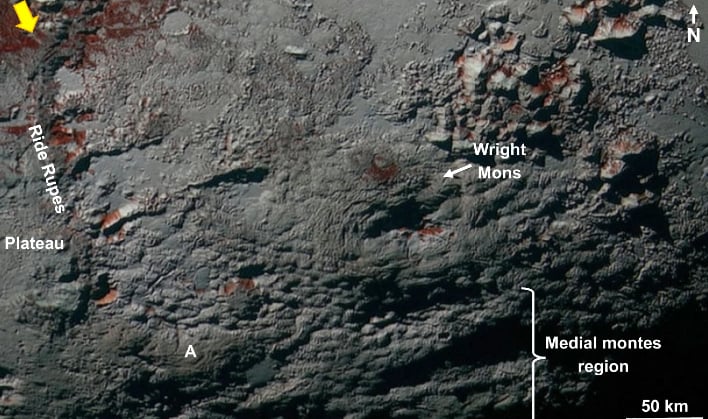Giant Erupting Ice Volcanoes On Pluto Could Indicate Signs Of Life On Dwarf Planet
Pluto lost its planet status back in 2016, when the International Astronomical Union devised a new definition for planets, and Pluto no longer fit the bill. It is located at the edge of our solar system in the Kuiper Belt. The frigid rock has an average temperature of negative 387 degrees Fahrenheit (negative 232 degrees Celsius). If you were able to stand on the surface of Pluto, you would be surrounded by mountains, valleys, glaciers, plains and craters.
However, a new analysis of a photo as part of a new study showed a bumpy region of Pluto that does not resemble any other part of our planetary system. The study detailing all the latest findings was published in the journal Nature Communications Tuesday.
NASA had its eye on a suspicious Mauna Loa-size cryovolcano on Pluto called Wright Mons, indicating "it would be the largest such feature discovered in the outer solar system" if confirmed. The new study seems to indicate that NASA's intuition might have been correct.
"We found a field of very large icy volcanoes that look nothing like anything else we have seen in the solar system," stated study author Kelsi Singer, Senior Research Scientist at the Southwest Research Institute in Boulder, Colorado.
The dwarf planet's volcanoes are quite extraordinary, with some reaching 4.3 miles (7.3 kilometers) in height. They are located where few impact craters exist, which seems to point to the volcanoes spewing out an icy mess that reshaped the surface in the somewhat recent past of Pluto's history.
But for ice volcanoes to be functional, they must have a heat source. "The existence of these massive features suggests Pluto's interior structure and evolution allows for ether enhanced retention of heat or more heat overall than was anticipated before New Horizons, which permitted mobilization of water-ice-rich materials late in Pluto's history," authors wrote in the new study.
While ice volcanoes have been seen elsewhere in our solar system, these are different than others that have been observed. "The way these features look is very different than any volcanoes across the solar system, either icy examples or rocky volcanoes," Singer said. "They formed as mountains, but there is no caldera at the top, and they have large bumps all over them."
"There are still a lot of challenges for any organisms trying to survive there," Singer stated. "They would still need some source of continual nutrients, and if the volcanism is episodic and thus the heat and water availability is variable, that is sometimes tough for organisms as well."
Singer added, "If we did send a future mission, we could use ice-penetrating radar to peer directly into Pluto and possibly even see what the volcanic plumbing looks like."


